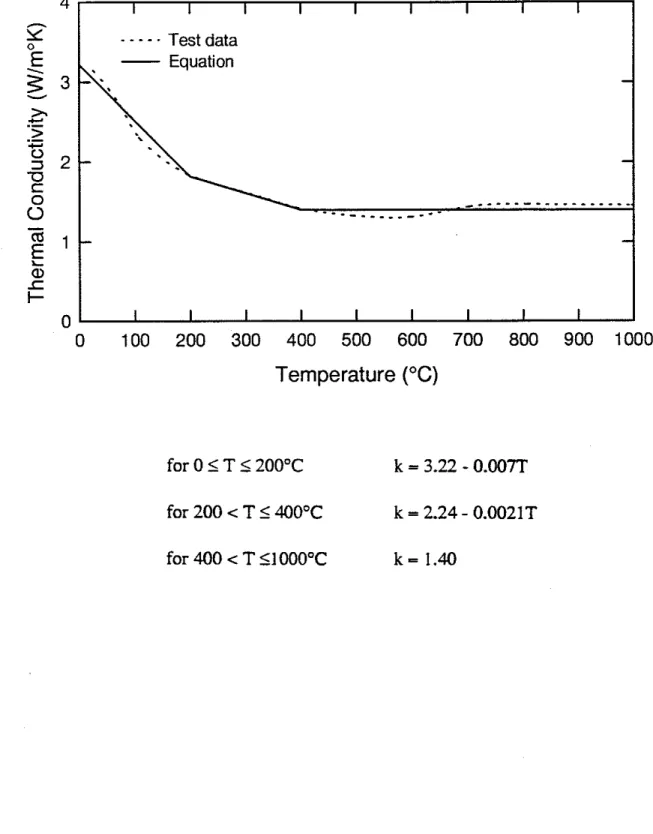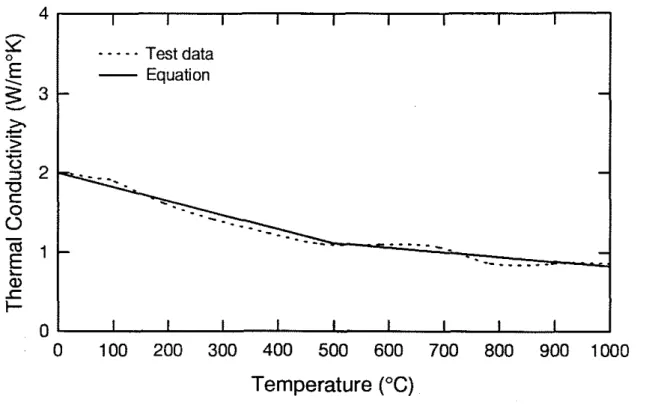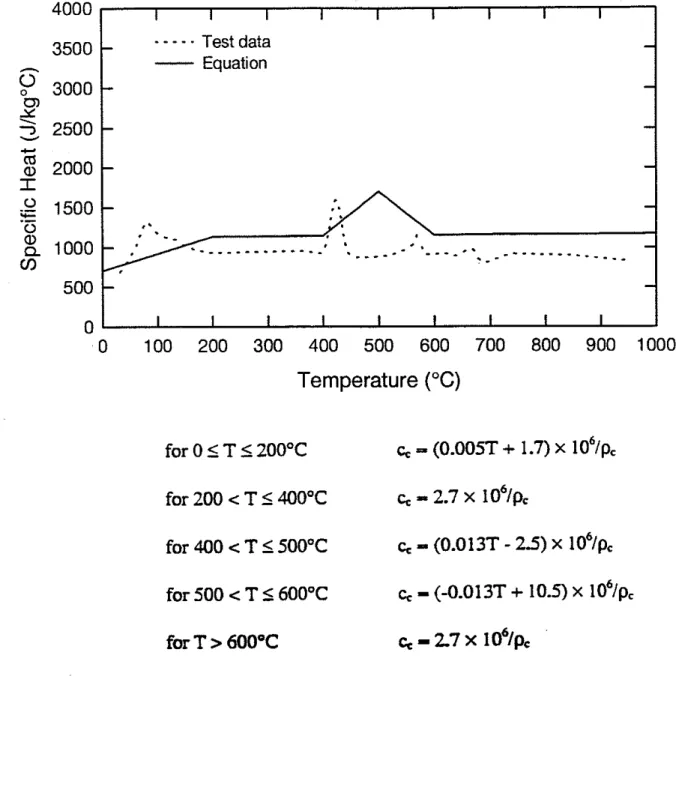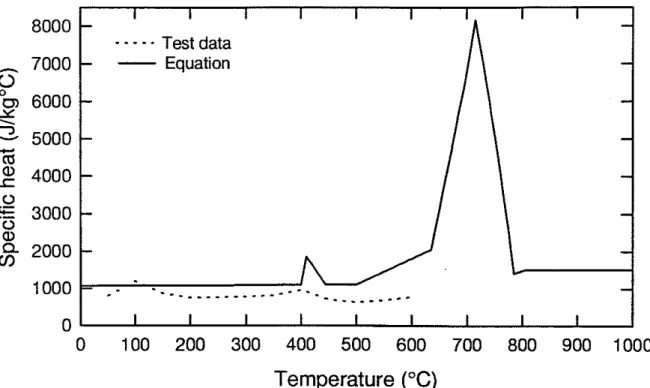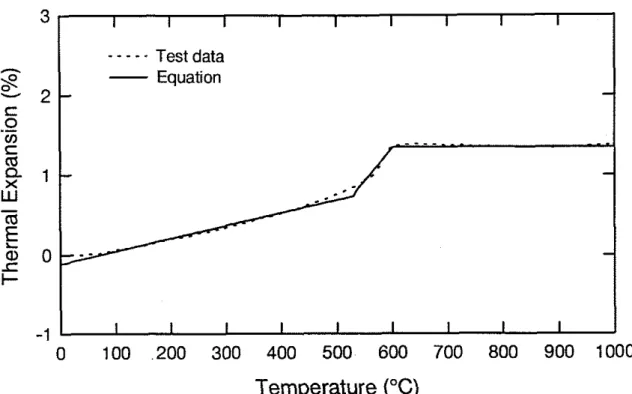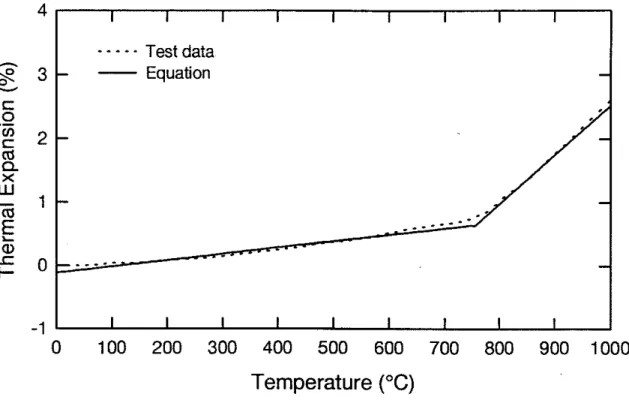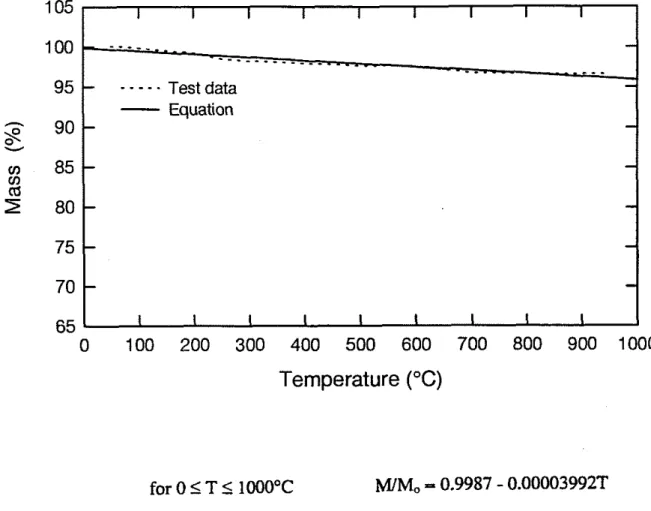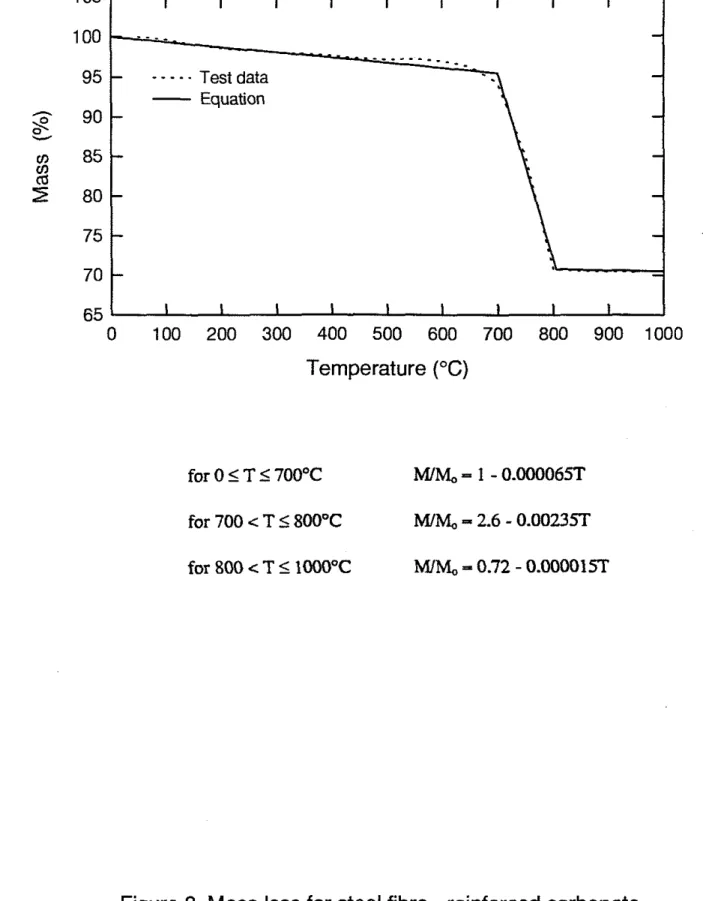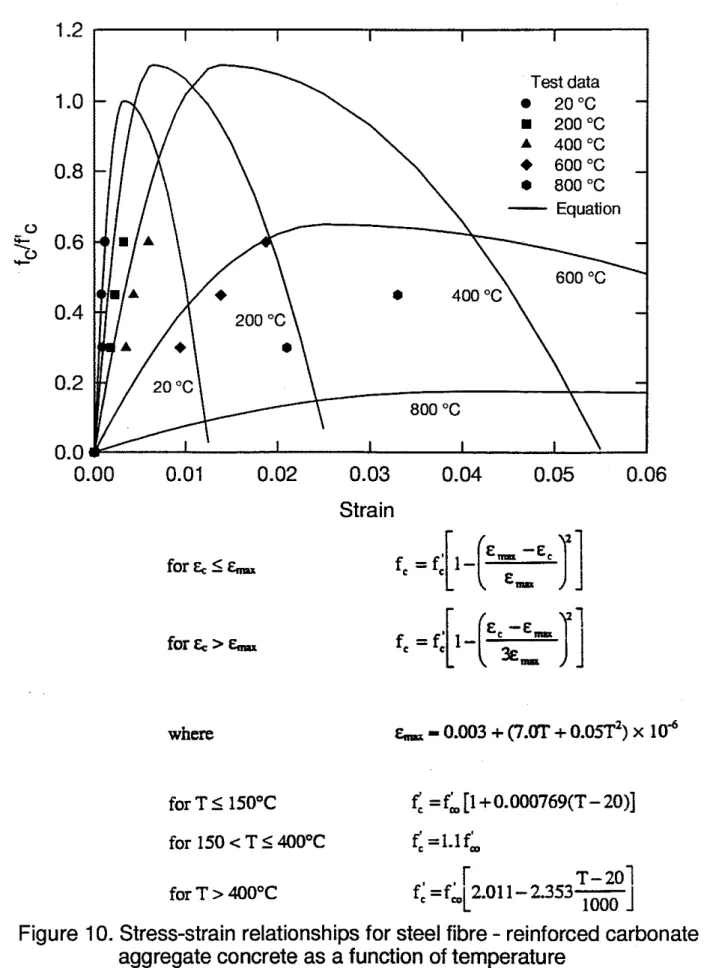Publisher’s version / Version de l'éditeur:
Vous avez des questions? Nous pouvons vous aider. Pour communiquer directement avec un auteur, consultez la
première page de la revue dans laquelle son article a été publié afin de trouver ses coordonnées. Si vous n’arrivez pas à les repérer, communiquez avec nous à PublicationsArchive-ArchivesPublications@nrc-cnrc.gc.ca.
Questions? Contact the NRC Publications Archive team at
PublicationsArchive-ArchivesPublications@nrc-cnrc.gc.ca. If you wish to email the authors directly, please see the first page of the publication for their contact information.
https://publications-cnrc.canada.ca/fra/droits
L’accès à ce site Web et l’utilisation de son contenu sont assujettis aux conditions présentées dans le site
LISEZ CES CONDITIONS ATTENTIVEMENT AVANT D’UTILISER CE SITE WEB.
Internal Report (National Research Council of Canada. Institute for Research in Construction), 1995-08
READ THESE TERMS AND CONDITIONS CAREFULLY BEFORE USING THIS WEBSITE.
https://nrc-publications.canada.ca/eng/copyright
NRC Publications Archive Record / Notice des Archives des publications du CNRC : https://nrc-publications.canada.ca/eng/view/object/?id=691369f3-fa6a-4bf1-b15d-b559f531b289 https://publications-cnrc.canada.ca/fra/voir/objet/?id=691369f3-fa6a-4bf1-b15d-b559f531b289
NRC Publications Archive
Archives des publications du CNRC
For the publisher’s version, please access the DOI link below./ Pour consulter la version de l’éditeur, utilisez le lien DOI ci-dessous.
https://doi.org/10.4224/20375154
Access and use of this website and the material on it are subject to the Terms and Conditions set forth at
Effect of temperature on thermal and mechanical properties of steel
fibre reinforced concrete
.
Institute for lnstitut de Research in recherche en Construction construction
Reinforced Concrete
by T.T. Lie and V.K.R. Kodur
Internal Report No. 695
Date of issue: August 1995
This is an internal report of the Institute for Research in Construction. Although not intended for general distribution, it may be cited as a reference in other publications.
EFFECT OF TEMPERATURE ON THERMAL AND MECHANICAL
PROPERTIES OF STEEL FIBRE-REINFORCED CONCRETE
T.T. Lie and V.K.R. Kodur
ABSTRACT
For use in fue resistance calculations, the relevant thermal and mechanical
properties of steel fibre-reinforced concrete were determined as a function of temperature. These properties included the thermal conductivity, specific heat, thermal expansion and mass loss, as well as the strength and deformation properties of steel fibre-reinforced siliceous and carbonate aggregate concrete. The thermal properties are presented in equations that express the values of these properties as a function of temperature in the temperature range 0-1000°C. The mechanical properties are given in the form of stress- strain relationships for the concretes at elevated temperatures. The results indicate that the steel fibres have little influence on the thermal properties of the concretes. The
influence on the mechanical properties, however, is relatively greater than the influence on the thermal properties and is expected to be beneficial to the fire resistance of structural elements constructed of fibre-reinforced concrete.
EFFECT OF TEMPERATURE ON THERMAL AND MECHANICAI. PROPERTIES OF STEKI. FIRRE-RI*:INFORCEL) CONCRETI*:
by
T.T. Lie and V.K.R. Kodur INTRODUCTION
In recent years, the construction industry has shown great interest in the use of fibre-reinforced concrete due to the improvements in structural performance it can provide compared to traditional plain concrete. These improvements have increased the
desirability of using fibre-reinforced concrete in applications where structural fire resistance is an issue.
At present, studies are in progress to determine the performance of steel fibre- reinforced concrete structural members in fire (1). In the past, the performance of these, and other structural members at temperatures encountered in fire, could only be
determined by testing. Over the years, however, methods have been developed for the calculation of the fire resistance of various structural members (2,3,4). These calculation methods are far less costly and time consuming than testing. However, to perform these calculations, a knowledge of the thermal and mechanical properties (at elevated
temperatures) of the materials, used in the construction of the structural members, is required.
The present study was undertaken to establish the thermal and mechanical properties of steel fibre-reinforced concrete at elevated temperatures. The data will be used to support mathematical models which predict the fire resistance of steel hollow structural section (HSS) columns. The study was carried out as part of a joint research project involving the Institute for Research in Construction, National Research Council of Canada (NRCC), the Fire Technology Laboratory of the Technical Research Centre of Finland and the Institut f~ Baustoffe, Massivbau und Brandschutz W M B ) of the Technische Universiat Braunschweig, Germany.
EXPERIMENTAL DETAILS
The experiments and the test specimens used were described in detail in previous reports ( 5 , 6 ) and will, therefore, be only briefly described in this paper.
Test Specimens
Three types of concrete specimens were investigated, namely specimens made with steel fibre-reinforced siliceous aggregate concrete and specimens made with carbonate aggregate concretes with and without steel fibre reinforcement. The corrugated steel fibres had a length of 50 mm, an equivalent diameter of 0.9 mm and an aspect ratio of 57. The weight percentage of the steel-fibres in the concrete was approximately 1.77. The 28-day compressive strength of the siliceous aggregate concrete was about 40 MPa, that of the plain carbonate aggregate concrete about 33 MPa and that of the fibre-reinforced carbonate aggregate concrete 43 MPa.
Methods for Measuring Thermal Properties
The measured thermal properties were the thermal conductivity, specific heat, thermal expansion and mass loss of the concretes at elevated temperatures (5). All measurements were made with commercially-available instruments.
The thermal conductivity of the concretes was measured using a non-steady state hot wire method. The measurements were made in the temperature rantr;e between room
-
temperature and 1000°C.The specific heat was measured using a Differential Scanning Calorimeter (DSC)* for temperatures up to 600°C. For temperatures above 600°C, a high temperature Differential Thermal Analyzer @TA) was used. The measurements were made in the temperature range between room temperature and 1000°C.
The thermal expansion of the concretes was measured with a dilatometric apparatus, capable of producing curves that show the expansion of the concrete with temperature in the range between room temperature and 1000°C.
The mass loss with temperature was measured by means of a Thermogravimetric Analyzer (TGA) in the temperature range between room temperature and 1000°C. Methods for Measuring Mechanical Properties
The mechanical properties measured were the strength and deformation properties of the concretes at elevated temperatures (6). To determine these properties, stress-strain and creep tests were carried out by IBMB in Germany. The tests were conducted in a special testing machine, consisting of an electrical furnace, in which the temperatures and rate of temperature rise could be controlled, and a loading device capable of producing controllable loads, strains and strain rates.
The stress-strain tests were carried out at a number of selected temperatures in the range between room temperature and 750°C under selected loads that varied from 15% to 60% of the compressive strength of the concretes at 20°C. The creep tests were carried out under the same loads in the temperature range between room temperature and 750°C.
THERMAL AND MECHANICAL RELATIONSHIPS
Data obtained from the experimental studies, to investigate the influence of temperature on the thermal behaviour of steel-fibre reinforced concrete, was presented in References (5) and (6). To facilitate the use of the thermal and mechanical properties as input data for the calculation of the temperatures of steel fibre-reinforced concrete constructions exposed to heat, formulas have been derived that give these properties as a function of temperature in the temperature range of 0-1000°C. In the current study, the thermal and mechanical relationships for steel fibre-reinforced concrete only are developed since the relationships for plain concrete are available in the literature (3). Further, in the development of the formulas for the thermal and mechanical properties, care was taken to keep the formulas simple and in a form similar to that for plain concrete (3). The validity of these formulas was established by comparing them with the test data.
Certain commercial oroducts are identified in this oaoer in order to adeouatelv soecifv the exoerimental
.
~,.
In no case'dcrs such identification imply ~commmdations or endorsemen; by the katiunal Research Council. nor does it i m ~ l v that the ~ r d u c t or mnrcnal identified is the hest available for theThermal Roperties
The thermal conductivities for the two types of concrete at elevated temperatures are shown in Figs. 1 and 2, together with the formulas expressing the relationship between thermal conductivity and temperature. The thermal conductivity of fibre-reinforced
siliceous concrete is higher than that of the carbonate concrete throughout the temperature range investigated. This is due to the higher crystallinity of the siliceous aggregate as compared to that of the carbonate aggregate. The higher the crystallinity, the higher the thermal conductivity and the rate of its decrease with temperature (3). The thermal
conductivity of steel-fibre reinforced concrete is slightly higher than that of plain concrete. This can be attributed to the contribution of the steel fibres, which have a higher thermal conductivity than concrete (3).
In
Figs. 3 and 4, the specific heats of steel fibre reinforced siliceous and carbonate aggregate concretes are shown as a function of the concrete temperature. The increase in specific heat for the fibre-reinforced siliceous aggregate concrete, at about 550°C, can be attributed to the presence of quartz, which transforms in this temperature region. The steep increase in specific heat, for the fibre-reinforced carbonate concrete, at about 750°C,is due to the presence of dolomite in the aggregate, which disassociates and absorbs heat in this temperature region (7). However, the influence of the steel on the specific heat of the concrete is very small and insignificant in the temperature range examined.
As the measurements of the specific heat of the steel fibre-reinforced carbonate concrete produced erratic and unreliable results for temperatures above approximately
600°C and due to the insignificant influence of the steel fibres on the specific heat, the existing formula for the plain carbonate aggregate concrete (3) was used to express the relationship between the specific heat of the fibre-reinforced carbonate aggregate concrete and its temperature.
The specific heat of steel fibre-reinforced siliceous aggregate concrete is generally higher than that of plain and fibre-reinforced carbonate aggregate concrete. The specific heat is slightly affected by the presence of the steel fibres. For carbonate concrete, the specific heal of the fibre-reinforced concrete is slightly higher in the temperature range
0-1 000°C. cxcept for the tcmperature region near 750°C, where the specific heat of the fibre-reinforced-concrete slightly exceed; that of the plain concrete.
The thermal expansions for the steel fibre-reinforced carbonate and siliceous aggregate concretes are shown as a function of temperature in Figs. 5 and 6. For the fibre-reinforced siliceous aggregate concrete, the thermal expansion increases with
temperature up to about 600°C and then remains constant. The considerable enhancement of the thermal expansion near 550°C can be attributed to transformation of quartz in the siliceous aggregate. The thermal expansion of fibre-reinforced carbonate concrete.
increases steeply with temperature above 850°C. This steep increase with temperature can be attributed to the presence of the steel-fibres, which continue to expand at an increasing rate.
In Figs. 7 and 8, the mass losses for steel fibre-reinforced carbonate and siliceous aggregate concrete are shown as a function of the concrete temperature. The mass loss for both concrete types is very small until about 6W°C, where it is about 3% of the original mass. In the case of fibre-reinforced siliceous aggregate concrete, the mass loss remains insignificant even after 600°C. Between 600°C and 8W°C, the mass of the fibre- reinforced carbonate aggregate concrete drops considerably with temperature. Above
concretes is not significantly affected by the presence of steel fibre reinforcement in the investigated temperature range of 0-1000°C.
Overall, the thermal properties, at elevated temperatures, exhibited by steel fibre- reinforced concrete, are similar to those of plain concrete (3).
Mechanical Properties
The results of the measurements of the mechanical properties of the concretes showed that the compressive strength at elevated temperatures of steel fibre-reinforced carbonate and silice6us aggregate concrete is higher &an that of plain concrete (6). The presence of steel fibres increases the ultimate strain and improves ductility for the
concrete. Data from the laboratory studies showed that the effect of aggregate type is not significant on the compressive strength.
Based on the results, stress-strain curves for the concretes at elevated temperatures were derived similar to those for plain concrete (3), with the only difference being that the stress maxima and their locations moved to higher values. These curves, together with the equations and experimental data, are shown in Figs. 9 and 10. The difference between the test data and values, produced by the equations, are small for temperatures up to about 600°C which is the important temperature region for fm resistance calculations. This difference can be attributed to the use of the same stress-strain relationships for both siliceous and carbonate aggregate concrete types. This will simplify defining the stress- strain relationships for these concretes at elevated temperatures.
Above 600°C, however, the differences are considerable, but their influence on the fire performance of a member made with this concrete is not great because, at these temperatures, the concrete has already lost most of its strength. In addition, the values provided by the equations will produce conservative results when used as input data for fire resistance calculations.
The compressive strength of steel fibre-reinforced concrete increases with
temperature, up to approximately 400°C and then decreases with increasing temperature.
CURRENT RESEARCH
Research is now in progress to develop mathematical models for the calculation of the fire resistance of HSS columns filled with steel fibre-reinforced concrete, using the equations for thermal and mechanical properties, given in this paper, as input data.
Simultaneously, fire tests are being carried out on full-size circular and rectangular HSS columns filled with various types of fibre-reinforced concretes. The purpose of these tests is to verify the models for various values of the parameters that determine the fire
resistance of the columns, such as load intensity, section dimensions, effective length of the column and concrete strength.
NOMENCLATURE
c, specific heat (J k g - " ~ ' )
f" concrete stress at temperature T (MPa)
fL
cylinder strength of concrete at temperature T (MPa)f
: cylinder strength of concrete at room temperature ( m a )
M mass at temperature T (kg) M, mass at room temperature (kg) T temperature ("C)
a
coefficient of thermal expansion (m m-"T1)E, concrete strain at temperature T (m m-')
Em, concrete strain at maximum stress of stress-strain curves for temperature T (m m-I)
p, density of the concrete (kg m")
REFERENCES
1. Kodur, V.K.R. and Lie, T.T., Fire resistance of hollow steel columns filled with steel fibre-reinforced concrete, Proceedings, Second University-Industry Workshop on Fiber Reinforced Concrete and other Composites, Toronto, Ontario, 1995.
2. Friedman, R., An international survey of computer models for fire and smoke, Journal of Fire Protection Engineering, Vol. 4, No. 1, 1992, pp. 81 -91.
3. Lie, T.T., Editor, Structural fire protection: Manual of Practice, ASCE Manual and Reports on Engineering Practice No. 78, American Society of Civil Engineers, New York, NY, 1992.
4. Sullivan, P.J.E., Terro, M.J. and Moms, W.A., Critical review of fire-dedicated thermal and structural computer programs, Journal of Applied F i e Science, Vol. 3, No. 2, 1993, pp. 113-135.
5. Lie, T.T. and Kodur, V.K.R., Thermal properties of fibre-reinforced concrete at elevated temperatures, Internal Report No. 683, Institute for Research in Construction, National Research Council of Canada, Ottawa, Ontario, 1995. 6. Lie, T.T. and Kodur, V.K.R, Mechanical properties of fibre-reinforced concrete at
elevated temperatures, Internal Report No. 687, Institute for Research in Construction, National Research Council of Canada, Ottawa, Ontario, 1995.
7. Lie, T.T. and Allen, D.E., Calculation of the fire resistance of reinforced concrete columns, National Research Council of Canada, Division of Building Research, NRCC 14047, Ottawa, Ontario, 1972.
Temperature
("C)
G
. * - - . o Test data-
C-
0- -
- - -
.
- - -
-.for
0
I T
I200°C
k
=3.22
-
O.OO7Tfor
200
<
T
I
400°C
k
=2.24
-
0.0021T
for 400
<
T
51000°C
k -
1.40
0-
z
' -
z
E
0
Figure
1.
Thermal conductivity of steel fibre
-
reinforced siliceous
aggregate concrete as a function of temperature
- - - _ _ _ _ _ _ - - -
-
I I I I I I I I I
I I I I I I I I I
- - - - .
Test data-
Equation-
-
-
- - -
-
- - -
1 I I I I I I I ITemperature
("C)
for 0
I
T
1
500°C
k
=2.000
- 0.00 1775T
for500
<
TI
1000°C
k
=1.402
- 0.000579T
Figure
2.
Thermal conductivity of steel fibre
-
reinforced carbonate
aggregate concrete as
a
function of temperature
- - * - . Test data
-
Equation3000
0) Y3
-
2500
Temperature ("C)
for
0
1T 1
200°C
c,
=(0.005T
+
1.7)
x
1o6/p,
for
200
c
T
1
400°C
c,
=2.7
x
1o6/pC
for
400 c T
1500°C
c,
-
(0.013T
-
2 5 )
X1o6/pC
for
500
< T
I600°C
for
T
>
600'C
c,
=27
X1o6/pC
Figure
3.
Specific heat for steel fibre
-
reinforced siliceous
aggregate concrete as a function of temperature
I I I I I I I I I
-
-
- - - - .
Test data-
-
Equation-
-
-
-
-
-
-
-
-
-
-
-
- - - - _ _ _ _ _ _ . - - - . - - - .
-
I I I I I I I I ITemperature
("C)
for
0
5
T
I
400°C
for
400
<
TI
410°C
for
410
<
T
5445OC
for
445
<
T
5500°C
for
500
<
T
1635°C
for 635
<
T
1
715°C
for
715
<
T
1785°C
for
T
>
785°C
Figure
4.
Specific heat for steel fibre
-
reinforced carbonate
aggregate concrete as a function of temperature
I I I I I I I I I
-.--.
Test data-
Equation-
-
.
-
-
I I I I I I I I ITemperature
("C)
for 0 5
T
5
530°C
a
-
-0.001
15
+
0.000016T
for 530 c
T
5600°C
a
-
-0.0364
+
0.000083T
for 600
<
T
I
1000°C
a-
0.0135
Figure
5.
Thermal expansion of steel fibre
-
reinforced siliceous
aggregate concrete as a function of temperature
I I I I I I I I I
